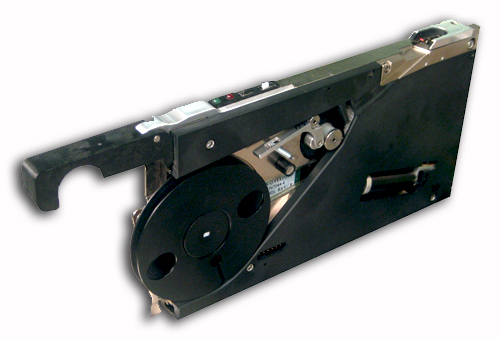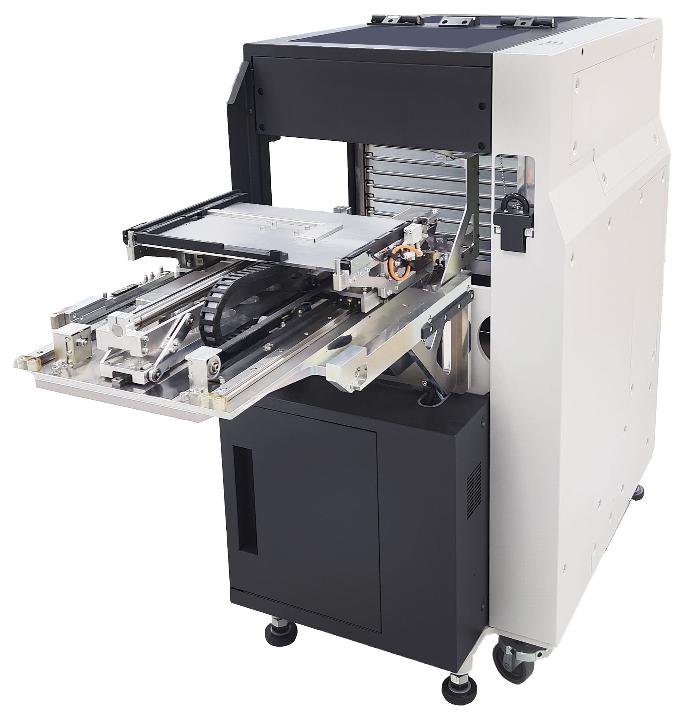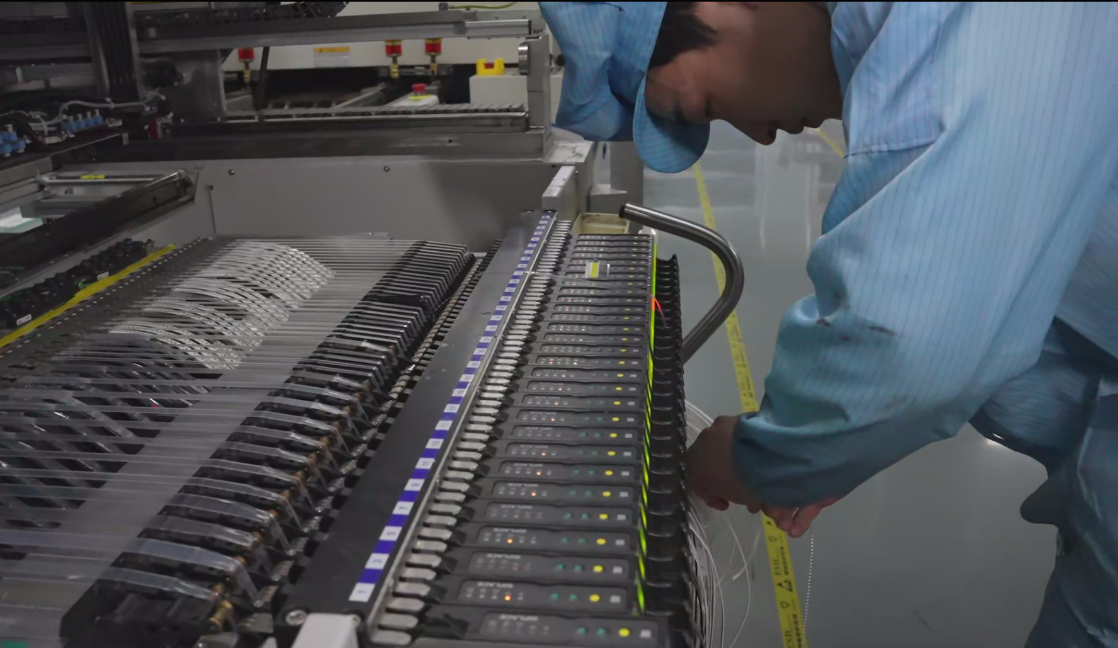If you're an electrical engineer working on optimizing a Surface Mount Technology (SMT) assembly line, one key decision is choosing between tape feeders and tray feeders for component delivery. So, which is best for your setup? Tape feeders are ideal for high-volume production with standard components due to their speed and efficiency, while tray feeders excel for handling larger, odd-shaped, or sensitive components in low-volume or specialized applications. Let's dive into a comprehensive SMT feeder comparison with ALLPCB, exploring tape feeder advantages, tray feeder applications, and component packaging in SMT to help you make an informed choice for your production needs.
Introduction to SMT Feeders: Why Your Choice Matters
In SMT assembly lines, feeders are critical for delivering components to pick-and-place machines with precision and speed. The right feeder can boost efficiency, reduce downtime, and ensure high-quality output. However, selecting between tape feeders and tray feeders depends on factors like component type, production volume, and line setup. This blog post will break down the differences, advantages, and ideal applications of each, giving you actionable insights to optimize your SMT process.
What Are Tape Feeders and How Do They Work?
Tape feeders are the most common type of feeder used in SMT assembly lines. They hold components in a reel of tape, which is typically made of plastic or paper, with small pockets to secure individual parts. A cover tape seals the components in place until they reach the pick-and-place machine. The feeder peels back the cover tape and advances the reel using a sprocket mechanism, positioning each component for pickup at a fixed location.
Tape feeders are designed for high-speed, high-volume production. They are compatible with standard SMD (Surface Mount Device) components like resistors, capacitors, and small ICs. According to industry data, tape feeders can handle component placement rates of up to 100,000 components per hour on advanced pick-and-place machines, making them a go-to for mass production.
Tape Feeder Advantages
- High Speed and Efficiency: Tape feeders support rapid component delivery, minimizing cycle times in high-volume runs. Their automated tape advancement ensures consistent performance.
- Wide Compatibility: Most standard components come packaged in tape and reel formats (e.g., 8mm, 12mm, or 16mm widths), making tape feeders versatile for various SMT lines.
- Cost-Effective for Bulk: Tape and reel packaging is often cheaper per unit for large quantities, reducing overall component costs. For instance, a reel of 5,000 0402 resistors might cost less than $0.01 per piece.
- Reduced Setup Time: Loading a new reel into a tape feeder is quick, often taking less than a minute, which minimizes downtime during production shifts.

What Are Tray Feeders and How Do They Work?
Tray feeders, also known as waffle pack feeders, use trays with individual pockets or compartments to hold components. These trays are often made of plastic and are designed to accommodate larger, heavier, or irregularly shaped components that don't fit well in tape and reel packaging. Tray feeders position the tray under the pick-and-place machine’s head, allowing it to pick components directly from the designated pocket.
Unlike tape feeders, tray feeders are not suited for high-speed production. They are manually or semi-automatically loaded, and the pick-and-place machine may need vision systems to locate components accurately, especially if alignment varies. Tray feeders are commonly used for components like QFPs (Quad Flat Packages), BGAs (Ball Grid Arrays), and connectors.
Tray Feeder Applications
- Large or Odd-Shaped Components: Tray feeders are perfect for parts that are too big or bulky for tape, such as large ICs or connectors with dimensions exceeding 50mm x 50mm.
- Sensitive Components: Some components, like MEMS sensors or high-precision chips, risk damage in tape packaging due to bending or vibration. Trays offer better protection.
- Low-Volume Production: For prototypes or small batches (e.g., less than 100 units), tray feeders are practical since components may not be available in reels.
- Custom Applications: Trays can be customized for unique components, making them ideal for specialized industries like aerospace or medical device manufacturing.

SMT Feeder Comparison: Key Differences
Understanding the core differences between tape and tray feeders is essential for selecting the right one for your SMT assembly line. Below is a detailed comparison based on critical factors:
| Feature | Tape Feeders | Tray Feeders |
|---|---|---|
| Speed | High (up to 100,000 CPH) | Lower (manual or semi-automated) |
| Component Size | Small to medium (e.g., 0402 to 1206 SMDs) | Large or irregular (e.g., BGAs, connectors) |
| Volume Suitability | High-volume production | Low-volume or prototype runs |
| Setup Time | Fast (under 1 minute per reel) | Slower (manual tray loading) |
| Cost Efficiency | Lower cost per component in bulk | Higher cost for packaging and handling |
| Protection | Moderate (risk of tape damage) | High (secure pockets for sensitive parts) |
This table highlights that tape feeders are built for speed and scale, while tray feeders prioritize flexibility and protection. For example, if you're running a line producing 10,000 smartphone PCBs daily, tape feeders will keep up with demand. However, for a batch of 50 custom medical devices with unique sensors, tray feeders offer the precision and care needed.
Component Packaging in SMT: Tape vs. Tray
Component packaging in SMT directly influences feeder choice. Most SMT components are packaged in one of three formats: tape and reel, trays, or tubes. Tape and reel dominate for standard parts, while trays are used for specialized components. Let’s explore how packaging impacts assembly:
- Tape and Reel Packaging: This format is standardized under EIA-481, ensuring compatibility with tape feeders across manufacturers. Components are placed in embossed pockets, sealed with cover tape, and wound onto reels (typically 7” or 13” in diameter). A reel might hold 2,000 to 10,000 small components, ideal for high-volume runs. However, tape can sometimes jam or tear, causing feeder errors—something engineers must monitor.
- Tray Packaging: Trays follow JEDEC standards, with grid layouts (e.g., 10x10 pockets) to hold components securely. They are stackable, reducing storage space, but require careful handling to avoid misalignment during loading. Trays are costlier to produce, often adding $0.50 to $2.00 per part in packaging costs, which can impact small-batch budgets.
Choosing between tape and tray packaging often comes down to how components are supplied by manufacturers. If a part is only available in trays, you’ll need a tray feeder, even if it slows down your line. Always check supplier datasheets for packaging options before finalizing your SMT setup.
Practical Scenarios: When to Use Tape Feeders vs. Tray Feeders
Let’s look at real-world scenarios to help you decide which feeder suits your SMT assembly line:
Scenario 1: High-Volume Consumer Electronics
If you're manufacturing 50,000 units of a smart home device monthly, your line likely uses standard components like 0603 resistors and small microcontrollers. Tape feeders are the clear choice here. They’ll handle the volume with placement speeds of 80,000+ components per hour, and the components are readily available in reels. Downtime for reel changes will be minimal, keeping your line running smoothly.
Scenario 2: Low-Volume Aerospace Boards
For a batch of 200 aerospace control boards with large BGAs and custom connectors, tray feeders are more suitable. These components may measure over 40mm x 40mm and are prone to damage in tape. Tray feeders ensure safe handling, and since production volume is low, speed is less critical than accuracy. Vision systems on your pick-and-place machine can adjust for tray positioning, ensuring precise placement.
Scenario 3: Mixed Production Runs
In a contract manufacturing setup with mixed runs (e.g., 5,000 consumer gadgets and 100 industrial sensors), you might need both feeder types. Use tape feeders for the bulk of small components and reserve tray feeders for specialized parts. Many modern SMT machines support hybrid setups, allowing you to switch between feeders based on the job. Plan your line layout to accommodate both to avoid bottlenecks.
Challenges and Limitations of Each Feeder Type
No feeder is perfect, and understanding their limitations helps in planning your SMT line:
- Tape Feeders: They can struggle with feeder jams if the tape is damaged or misaligned, leading to placement errors. Additionally, very small components (e.g., 0201 size) may shift in pockets, requiring high-precision feeders costing upwards of $2,000 each. Storage of large reels also takes up significant space in high-volume facilities.
- Tray Feeders: Their main drawback is speed. Manual loading and unloading can take several minutes per tray, slowing down production. They also require more operator training to ensure components aren’t damaged during handling. Tray feeders are less common, so machine compatibility can be an issue on older equipment.
Tips for Optimizing Your SMT Feeder Setup
Regardless of whether you choose tape or tray feeders, optimizing their use can improve efficiency. Here are practical tips for electrical engineers:
- Match Feeder to Machine Specs: Ensure your pick-and-place machine supports the feeder type and size. For tape feeders, check compatible tape widths (e.g., 8mm to 56mm). For tray feeders, confirm maximum tray dimensions (often up to 380mm x 460mm per JEDEC standards).
- Invest in Quality Feeders: Low-cost tape feeders might save money upfront but often lead to jams or misalignment. Brands like Yamaha or Fuji offer reliable feeders with error rates below 0.01%.
- Use Software for Planning: SMT programming software can simulate feeder placement and component pickup, reducing setup errors. Tools like Siemens Valor or Mycronic MyCenter can predict bottlenecks with tray feeders in mixed runs.
- Maintain Feeders Regularly: Clean tape feeders to remove dust or adhesive residue from cover tape, which can cause jams. For tray feeders, inspect trays for cracks or misalignment that could affect component positioning.

Conclusion: Making the Right Choice for Your SMT Line
Choosing between tape feeders and tray feeders for your SMT assembly line boils down to your production goals and component needs. Tape feeders shine in high-volume environments with standard components, offering unmatched speed and cost efficiency. Tray feeders, on the other hand, are indispensable for handling large, sensitive, or custom parts in low-volume or specialized applications. By evaluating factors like component packaging in SMT, production volume, and line speed, you can select the feeder—or combination of feeders—that maximizes throughput and quality.
As an electrical engineer, take the time to analyze your specific requirements. Are you prioritizing speed for mass production, or precision for niche projects? Test both feeder types on your line if possible, and consult with component suppliers to understand packaging constraints. With the right setup, you’ll ensure your SMT assembly line operates at peak performance, meeting both deadlines and quality standards.
 ALLPCB
ALLPCB







